Tiger Tank Ausf. E Befehlstiger
This surviving German Tiger Tank I Ausf. E Panzerkampfwagen VI Heavy Tank can be found at the Kubinka Tank Museum, Russia near Moscow. It is a command version of the Tiger Tank; a Befehlstiger I. The turret configuration is not the same as other Tiger I tanks. It has the radio antenna placed in a different location.
A Befehlstiger would have been used by a Battalion Commander as it was fitted with better radios. Its serial number is 250427. It is believed that the tank belonged to the heavy tank battalion s.Pz. Abt. 424 and was captured during the German Army retreat from Russia in January 1945. The Kubinka Tank Museum have added the markings of s. Pz. Abt 505. The Wanne Nummer is 250315, Turmgehäuse Nummer 250332 amp.(denoting it was forged and welded together at D.H.H.V.). Originally this Tiger Ausf. E was assembled as a Panzerbefehlswagen when completed in August 1943, but it is one of 18 that was converted back to regular Panzerkampfwagen in November 1943. On the hull roof, the location of the porcelain insulator for the Sternantenne is plated over while the antenna base penetration on the turret roof had been plugged. Some of the original, vertically applied zimmerit can still be seen on the tank.
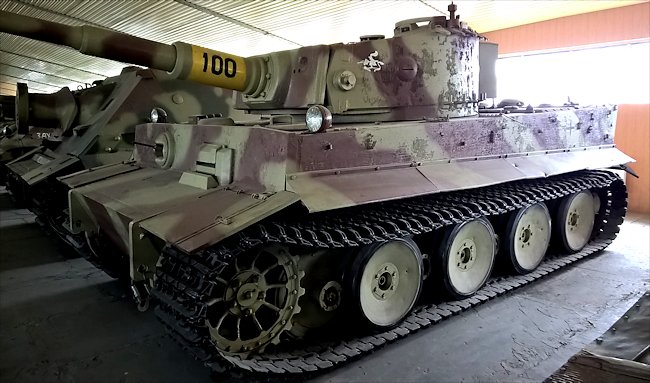
German WW2 Tiger 1 Tank Ausf. E Panzerkampfwagen VI Befehlstiger Heavy Tank
Location
Take the train from Moscow's Belorusskaya Railway Station, in the north west of the city, to Kubinka. It is about an hours train journey. It is a direct service, no need to change, and the the tickets are cheap. Make sure you print off a list of station names so you can check off where you are and get ready to get off the train at Kubinka. The station names are not always easy to read or see.
Although this military town has been active for over 80 years it has a rundown look to it. You can walk to the museum but there is the equivalent of a motorway crossing your route. There are no pedestrian crossings over it. There are a number of taxi stands near the station. They are very cheap and honest. I tried to give the driver a big tip but he refused. Ask for his card so you can ask the Museum gate staff to call his company when you are finished at the Museum to get back to the railway station.
Specifications
The armour on a Tiger tank ranged from 25 mm to 120 mm in thickness. It was armed with a very powerful high velocity 88mm KwK 36 L/56 anti-tank gun. The tank could carry a mixture of 96 rounds of AP armour piercing rounds and HE high explosive shells. It was also armed with two 7.92 mm MG34 machine guns: one mounted in the hull and the other next to the main gun in the turret. It needed a crew of five: Commander, gunner, loader, driver, co/driver-hull machine gunner.
The Tiger 1 tank weighed 54 tonnes and was powered by a Maybach HL210 P45 V-12 petrol engine that produced 641 hp. The tank had a maximum road speed of 45.4 km/h (28.2 mph). It had an operational range of between 110-195 km (68-121 miles)
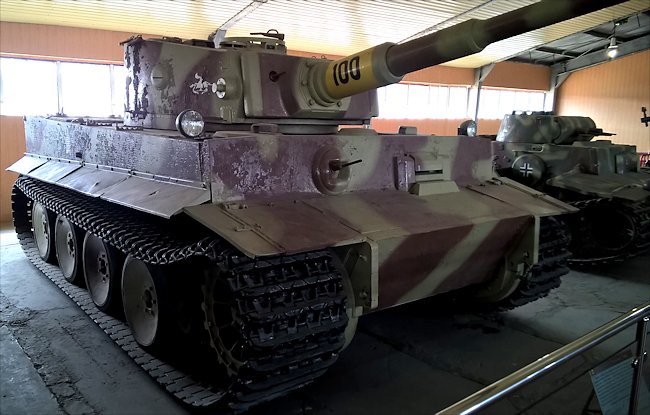
Tiger Tank I Ausf. E at the Kibunka Tank Museum, near Moscow, Russia
Tigers on the Eastern Front 1942
The first Tiger 1 heavy tanks were completed at the Henschel factory in Kassel in August 1942 and began to equip three new separate heavy tank battalions. The 56-ton Tiger I was not a major breakthrough in tank technology because its layout was similar to the Panzer IV medium tank, it failed to incorporate sloped armour and its Maybach HL 210 P45 engine (641hp), which still used petrol, had poor fuel efficiency and power output. It needed a bigger more powerful engine to cope with the weight of the tank.
The Tiger was intended to be a breakthrough tank, but it lacked the mobility for true mobile warfare. The Tiger's armour was much thicker than previous German tanks and it was impervious to Soviet T-34/76 and KV-1 76.2mm tank gun fire from its frontal arc, but it could be successfully engaged with flank shots at ranges under 500 meters. Yet the Tiger earned its reputation — and the admiration of later generations of tank enthusiasts — due to its superior firepower.
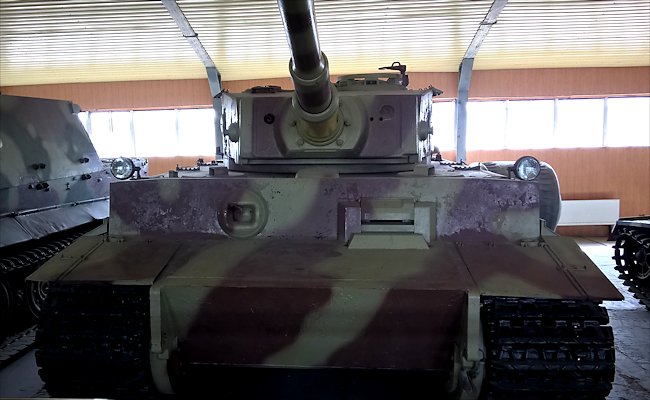
The German WW2 Tiger I Ausf. E Heavy Tanks had 100mm of frontal armour and 120mm on the gun mantel.
The 8.8cm Kwk 36 L/ 56 cannon provided the Tiger I with a very high hit/kill probability against armoured targets out to 1,000—1,200 meters; very few Second World War tank engagements occurred at ranges beyond this. After more than a year of operating in dread of the T-34/76 and KV-1, the Germans finally had a tank that could negate the Red Army's qualitative edge in armour. Unfortunately for their cause, the Tiger could only be produced in token quantities.
Within a few weeks of receiving the first production Tigers — which had many technical faults that were still being addressed by the manufacturer — all three heavy tank battalions were directed to send one of their two tank companies to the front. Apparently, the OKH put no real thought into the initial operational deployment of these three Tiger I companies and it was poorly executed.
The 1./502 schwere Panzer-Abteilung 502 (s.Pz.Abt. 502) was deployed by rail to the Leningrad front in August—September 1942 and eventually fielded nine Tiger tanks. The s.Pz.Abt. 501 was sent with eleven Tigers to Tunisia in November and the s.Pz.Abt. 503 was designated to reach Heeresgruppe A before the end of December 1942 with twenty Tigers.
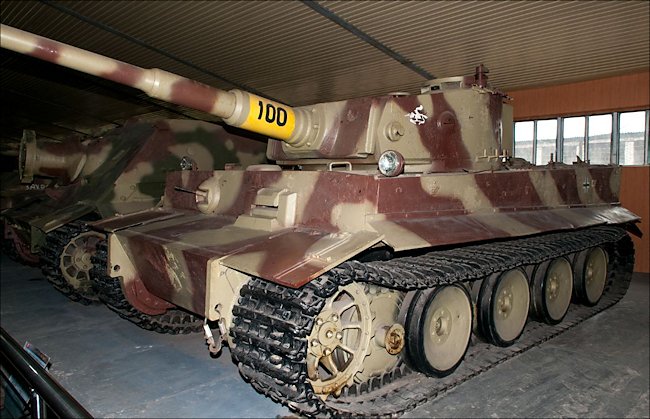
The Tiger Tank left the German factories painted a sandy yellow colour if they were destined for North Africa. Brown or Green (or both) camouflage paint was added by the tank crews later
By deploying forty-odd Tiger tanks to three different areas, the OKH ensured that the new tanks would have no more than a localized, tactical impact and would prematurely expose the technical capabilities of the new weapon to both the Western Allies and the Red Army before they were available in quantity. It was an idiotic decision.
Making the choice of deployment even more problematic, the OKH disregarded the difficulty of supporting a new tank type in company-size detachments. Albert Speer, as minister of armaments, warned that splitting the available Tiger tanks up into small detachments across different fronts would make logistical support virtually impossible, since very few spare parts for the Pz.VI were manufactured. Maybach only provided one spare transmission and engine for each ten Tigers, which led to a very low operational readiness rate for Tigers at the front.
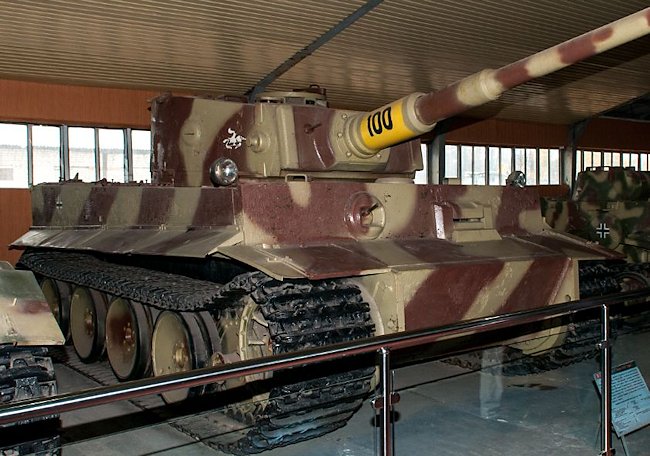
In winter German Tiger tank crews used white wash to camouflage the tanks after it had snowed.
Nor was the combat debut of the Tiger auspicious. Shortly after receiving most of its Tigers, Heeresgruppe Nord committed 1./s.Pz.Abt. 502 in an ill- judged infantry support attack east of Leningrad on 22 September 1942. The terrain in this area was marshy, with heavy vegetation and non-existent road networks — totally unsuitable for the use of heavy tanks. In this kind of terrain, Soviet tanks and antitank guns had better opportunities to ambush Tigers at close range and defeat their thick armour.
The Tigers were also suffering from endemic problems with their transmissions, which had not yet been perfected for field conditions. Nevertheless, four Tigers were committed to the attack, which proved to be a fiasco, with all four lost to either mechanical defects or anti-tank fire. Three damaged Tigers were recovered, but one had to be abandoned.
The 1./s.Pz.Abt. 502 continued to serve in the Leningrad area throughout the rest of 1942, but due to adverse terrain and poor operational readiness rates, it accomplished very little. The lead elements of s.Pz.Abt. 503 were sent to Heeresgruppe Don on 27 December 1942, but arrived too late for Operation Wintergewitter.
The appearance of the Tiger, even in token quantities, did worry the Red Army and helped to spur qualitative improvements to Soviet armoured forces. Soviet tank design priorities switched on 22 June 1941. With only minor improvements to the T-34, this tank had been sufficient for the battlefield of 1941—42. However the GABTU became concerned when the Germans introduced the long 7-5cm KwK 40 L/43 gun in spring 1942 and recognized that once German tanks with 8.8cm guns and thick armour became more common on the battlefield, the T-34/76 would be put at a grave disadvantage.
In June 1942 the GABTU tasked the Plant No. 183 design team, now at Nizhniy Tagil, to reexamine options. By the time that the first Tigers appeared on the Eastern Front, a prototype T-43 was completed; this utilized a new larger, three-man turret, torsion-bar suspension and thicker armour, but still relied upon the same 76.2mm F-34 gun. The reasons for the T-43 not being accepted into production, listed in the final report dated 30th September 1943, were low fire power, thin frontal armor, bad choice of the armor thickness at the various places of the hull and the turret, and low reliability of the running gear.
Impressed by the usefulness of the German StuG-III series, the GABTU also became interested in developing assault guns and tank destroyers for the Red Army. By late December 1943, the first SU-122 SPGs would enter limited production followed later by the T-34/85 and the IS-2 to meet the Tiger tank threat.
WW2 tank books

